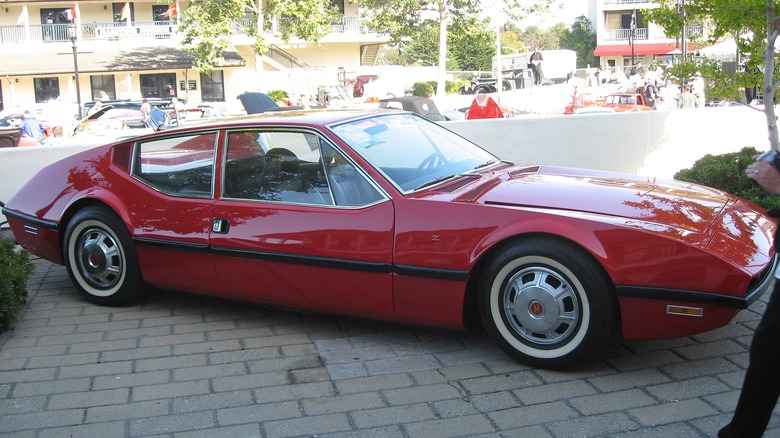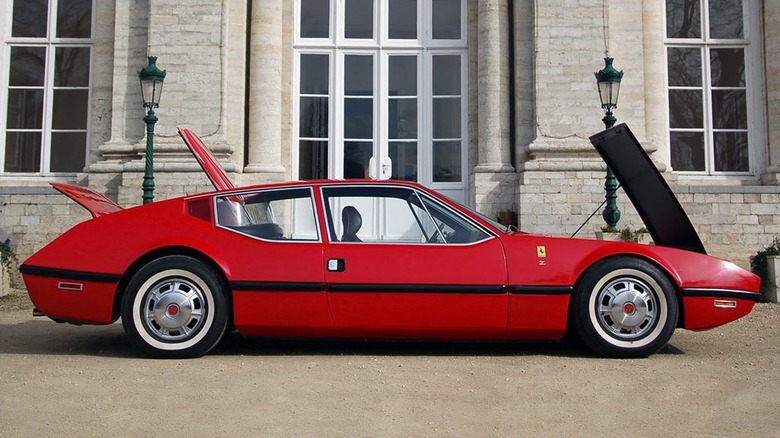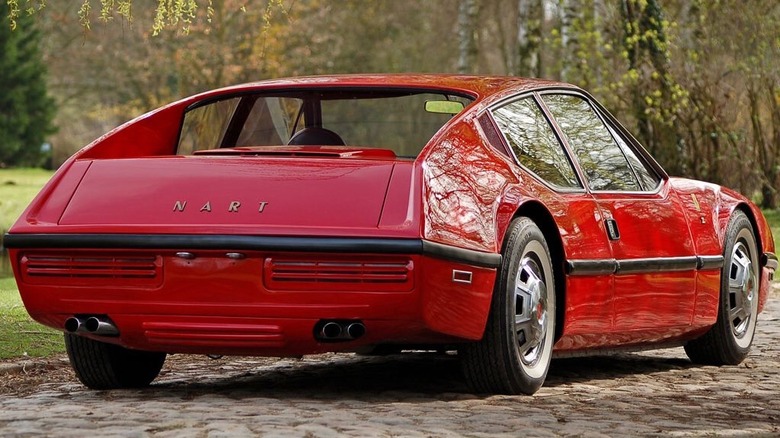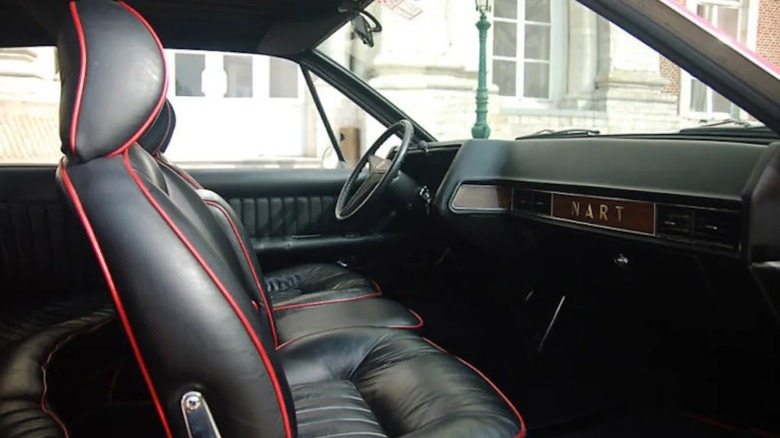The Forgotten Cadillac Concept Car With An Italian Flair
For decades now, the Cadillac brand has been synonymous with American luxury. Models such as the DeVille, Eldorado, Fleetwood, and Escalade have roamed the landscape as shining examples of General Motors' prowess.
But there was a moment when a coalescence of events brought together a motley crew led by General Motors, an Italian race car driver turned Ferrari car salesman, and an Italian coachbuilder (aka car body maker). This rag-tag "team" threw caution to the wind — and a bunch of seemingly random parts into a blender — and built something bearing the "Cadillac" badge that looked nothing like a Cadillac. The tale of the fateful Cadillac NART Zagato is long, twisted, and not without a few bumps.
In 1966, the state of California enacted the very first set of tailpipe emission standards in the United States, and kickstarted the movement to reduce auto emissions around the country. In '68, the U.S. put regulations on every new vehicle — both foreign and domestic. It was so stringent that the new laws quickly quashed the import car business.
Enter Luigi Chinetti. If there was a singular person who can be credited for making Ferrari a "thing" in the United States, it's this guy. But we need to jump back to the early 1900s to see Chinetti first become a mechanic at 14, then go on to work for Aston Martin at 17, where he meets Enzo Ferrari.
Wealthy Americans wanted a Ferrari
Chinetti was in Paris selling cars for Alfa Romeo, but his true love was racing cars. Between 1932 and 1953, only 12 Le Mans races were held, but Chinetti competed in every one of them — winning three by the end of his illustrious career. His first two wins (1932 and 1934) came while driving Alfa Romeos. In May of 1940, Chinetti went to the United States to race in the famed Indianapolis 500 as a member of female racer Lucy O'Reilly-Schell's racing team. A few days after arriving Stateside, Italy was thrust into World War 2, and he stayed — eventually becoming a U.S. citizen (via Jalopnik).
Chinetti flew back to Italy in 1946 for a meeting with his friend Enzo Ferrari — on Christmas Eve, no less. The conversation is said to have centered around Ferrari making road cars for the first time, not just race cars, and selling them to the masses ... including wealthy Americans. The very next year, Ferrari unveiled the 125 S.
Chinetti sold his first Ferrari (a 166 MM Barchetta) to California radio executive Tommy Lee in 1948, proving to Enzo that he could sell them in the United States. Meanwhile, Chinetti once again won Le Mans in 1949 — but this time sitting behind the wheel of a Ferrari 166 MM Barchetta. With all of his success, he convinced Enzo to let him open the first Ferrari dealership in the United States later that year.
Exhaust fumes killed imports
Experts aren't sure of the exact date, but at some point, Chinetti started the privately-owned North America Racing Team (N.A.R.T.) through his relationship with Enzo. It allowed him to get "ex-Works racing cars" from the Italian company, which in turn drew pro and amateur drivers to the team. But Chinetti's main goal was to use N.A.R.T. as a marketing tool to sell Ferraris to wealthy Americans. The strategy worked like a charm: From 1947 to 1970, he was the sole Ferrari dealer in the United States, and N.A.R.T. would go on to become iconic within the racing industry — which helped boost Ferrari's popularity in the U.S.
When the new tailpipe emission standards dropped, and importing exotics took a hit, Chinetti — and by now, his son, Chinetti "Coco" Jr. — went to GM with an idea for a homegrown "exotic" U.S. car that adhered to the new regulations. This "modified Eldorado for rich people" with an Italian flair was the Cadillac NART Zagato.
The body and design are believed to have come from Chinetti's son, "Coco" Jr., who hired a grad student from an art school to draw up his original ideas (via GM Authority). GM took those drawing and built a "full-sized clay model" from them (via Jalopnik).
GM furnished the chassis, engine, and gearbox from the Mark VII Cadillac Eldorado. There's some discrepancy over the engine size, though (per TopSpeed). It's believed a 500 cubic inch (8.1-liter) V8 was dropped midship because it put out 400 horsepower. However, a picture with "NART 472 CID 400 hp" on the air filter cover suggests a 472 cubic inch (7.7-liter) V8 was installed, but that engine only provides 375 horsepower. Yet, the car was advertised to put out 400 horsepower, so the true answer is a mystery.
The NART Zagato: A humpback whale made from leftover parts
General Motors also provided the steering column and hubcaps, a tweaked dashboard, four-wheel disc brakes, a suspension kit (via GM Authority), and a Turbo Hydra-Matic mated to a four-speed automatic gearbox (via TopSpeed). The taillights were taken from a 1966 Pontiac GTO (via Jalopnik).
These sundry parts, including an assortment from unspecified European makers (via How Stuff Works), were turned over to the famous Italian coachbuilder Zagato. The shroud of the 2+2 coupe with a bench front seat was made entirely of aluminum. "Z" badging and the "NART" name were prominently displayed around the car. It came with all the standard amenities of the time as well (i.e., power accouterments, climate control, AM/FM stereo, etc.).
By the time the car was finished in 1970, another coalescence of events had occurred — blame it on the constant build delays or economic hardship — and GM decided to ditch the project altogether. According to TopSpeed, the N.A.R.T. did move on to a second round of development where the car's "humpback" whale rear end would have been modified, and it even made it to a third stage where a "breadvan" version would have been developed. Neither of those designs were made a reality, and we're all probably better off without them.
The sole Cadillac NART made an appearance at Zagato's booth during the Turin Motor show in 1971, followed by an appearance at Chinetti's booth at the New York International Automobile Show (via Jalopnik).



